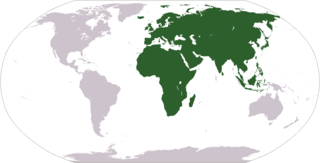 W
WThe culture of Asia encompasses the collective and diverse customs and traditions of art, architecture, music, literature, lifestyle, philosophy, politics and religion that have been practiced and maintained by the numerous ethnic groups of the continent of Asia since prehistory. Identification of a specific culture of Asia or universal elements among the colossal diversity that has emanated from multiple cultural spheres and three of the four ancient River valley civilizations is complicated. However, the continent is commonly divided into six geographic sub-regions, that are characterized by perceivable commonalities, like culture, religion, language and relative ethnic (racial) homogeneity. These regions are Central Asia, East Asia, North Asia, South Asia, Southeast Asia and West Asia.
 W
WThe term Asian furniture, or sometimes Oriental furniture, refers to a type of furniture that originated in the continent of Asia. Sometimes people also think of Asian furniture as a style of furniture that has Asian accents. With assimilation with western culture the term can also expand to modern Asian furniture.
 W
WBalgha, also spelled balga, belgha, or belga, are heelless slippers made from leather. They are part of traditional dress of the Muslim world and are related to Ancient Asia and the Chinese civilization.
 W
WThe Department of Asia in the British Museum holds one of the largest collections of historical objects from Asia. These collections comprise over 75,000 objects covering the material culture of the Asian continent, and dating from the Neolithic age up to the present day.
 W
WEastern philosophy or Asian philosophy includes the various philosophies that originated in East and South Asia including Chinese philosophy, Indian philosophy, Japanese philosophy, and Korean philosophy which are dominant in East, South and Southeast Asia.
 W
WEtiquette in Asia varies from country to country even though certain actions may seem to be common. No article on the rules of etiquette, nor any list of faux pas, can ever be complete. As the perception of behaviors and actions vary, intercultural competence is essential. A lack of knowledge about the customs and expectations of Asian people can make even those with good intentions seem rude, foolish, and disrespectful.
 W
WA gul is a medallion-like design element typical of traditional hand-woven carpets from Central and West Asia. In Turkmen weavings they are often repeated to form the pattern in the main field.
 W
WBihaku (美白) is a Japanese term meaning "beautifully white" which was coined in the early 1900s with the emergence of skin whitening products and cosmetics. Even in ancient Japanese Haiku there have been numerous references to this.
 W
WMiddle Eastern philosophy includes the various philosophies of the Middle East regions, including the Fertile Crescent, Iran, and Anatolia. Traditions include Ancient Egyptian philosophy, Babylonian philosophy, Jewish philosophy, Iranian/Persian philosophy, and Islamic philosophy.
 W
WThe term "Old World" is used commonly in the West to refer to Africa, Asia and Europe, regarded collectively as the part of the world known to its population before contact with the "New World".
 W
WPaan is a preparation combining betel leaf with areca nut widely consumed throughout Southeast Asia, South Asia and East Asia. It is chewed for its stimulant effects. After chewing, it is either spat out or swallowed. Paan has many variations. Slaked lime (chuna) paste is commonly added to bind the leaves. Some preparations in the Indian subcontinent include katha paste or mukhwas to freshen the breath.
 W
WThe description Paris of the East has been liberally applied to a large number of locations, including:
 W
WPornography in Asia is pornography created in Asia, watched in Asia, or consumed or displayed in other parts of the world as one or more genres of Asian porn.
 W
WA Sinophile is a person who demonstrates a strong interest for Chinese culture, Chinese language, Chinese history, or Chinese people. It is also commonly used to describe those knowledgeable of Chinese history and culture, non-native Chinese language speakers, pro-Chinese politicians, and people perceived as having a strong interest in any of the above.
 W
WThe Thai-Bharat Cultural Lodge (อาศรมวัฒนธรรมไทย-ภารต) is one of the most prestigious Indian cultural organisation in Thailand that seeks to promote comparative studies and exchange between Thai and Indian history and culture. It was founded in 1940 in Bangkok by Swami Satyananda Puri with encouragement from the Indian Nobel Laureate Rabindranath Tagore. The Swami Satyananda Puri foundation was established by the Thai-Bharat Cultural Lodge in 1942. The SSPF library today is a reference library that houses many old and rare Indian texts. The foundation is also involved in promoting work on Indian culture, especially on the Ramayana.
 W
WTiger hunting is the capture and killing of tigers. Humans are the tigers' most significant predator, and illegal poaching is a major threat to the tigers. The Bengal tiger is the most common subspecies of tiger, constituting approximately 80% of the entire tiger population, and is found in Bangladesh, Bhutan, Myanmar, Nepal, and India. It has been hunted in these countries for centuries. The tiger has historically been a popular big game animal and has been hunted for prestige as well as for taking trophies. Extensive poaching has continued even after such hunting became illegal and legal protection was provided to the tiger. Now a conservation-reliant endangered species, the majority of the world's tigers live in captivity. Tigers were once considered to be harder to hunt than lions, due to their habit of living alone in dense cover and not noisily asserting their presence with roars as often.
 W
WThe Floating Lamp is a type of lamp that floats on the surface of the water. It is also known as a river lamp or lake lamp, etc. depending on the water body in which the water lamp is located. The water lamp originated in India and was later spread to Southeast Asia and East Asia due to Buddhism.